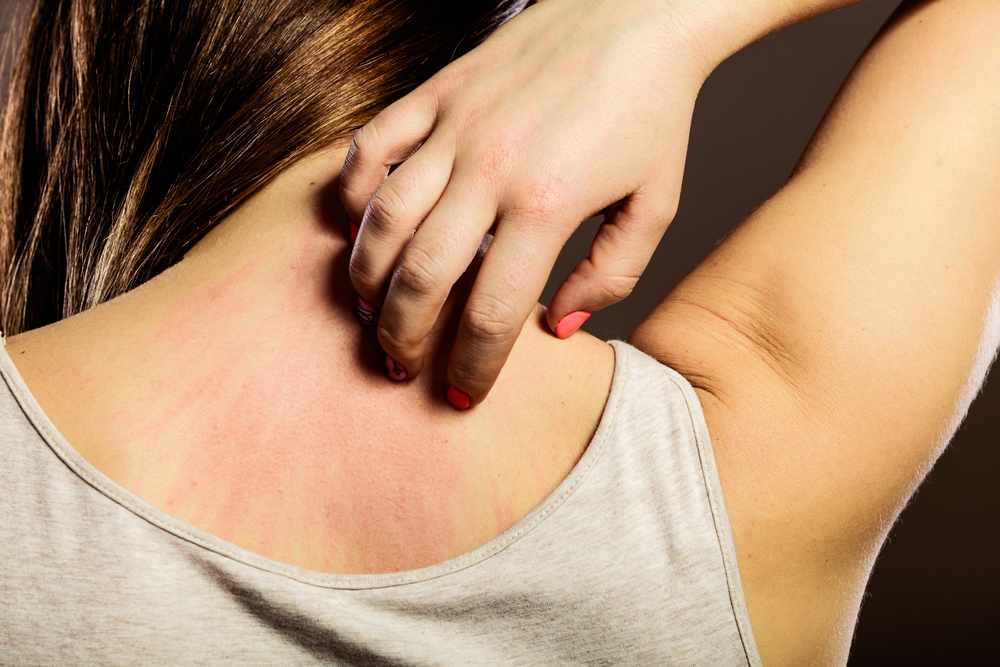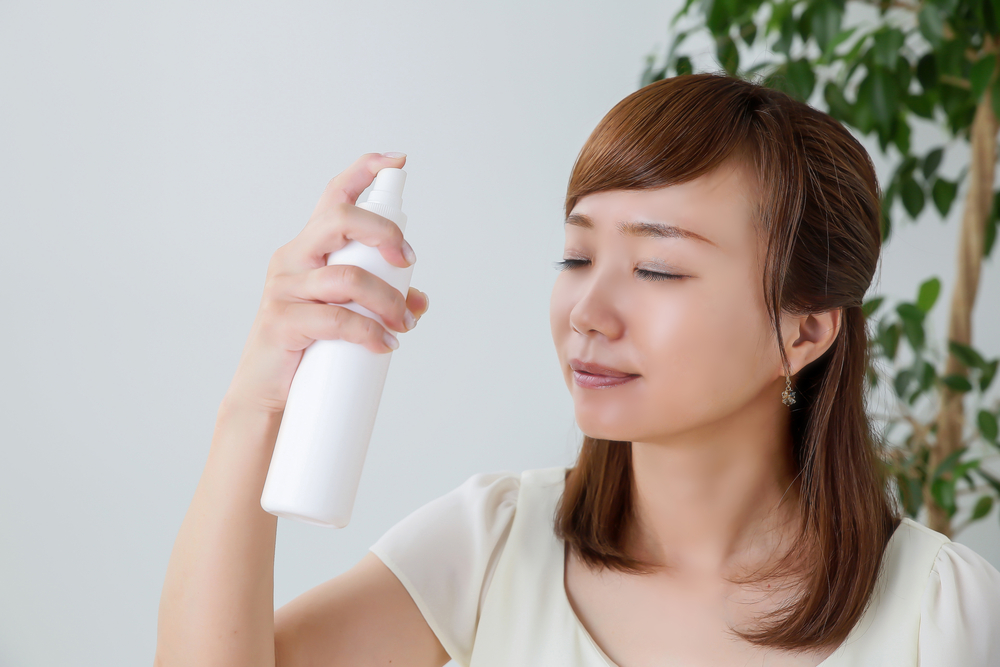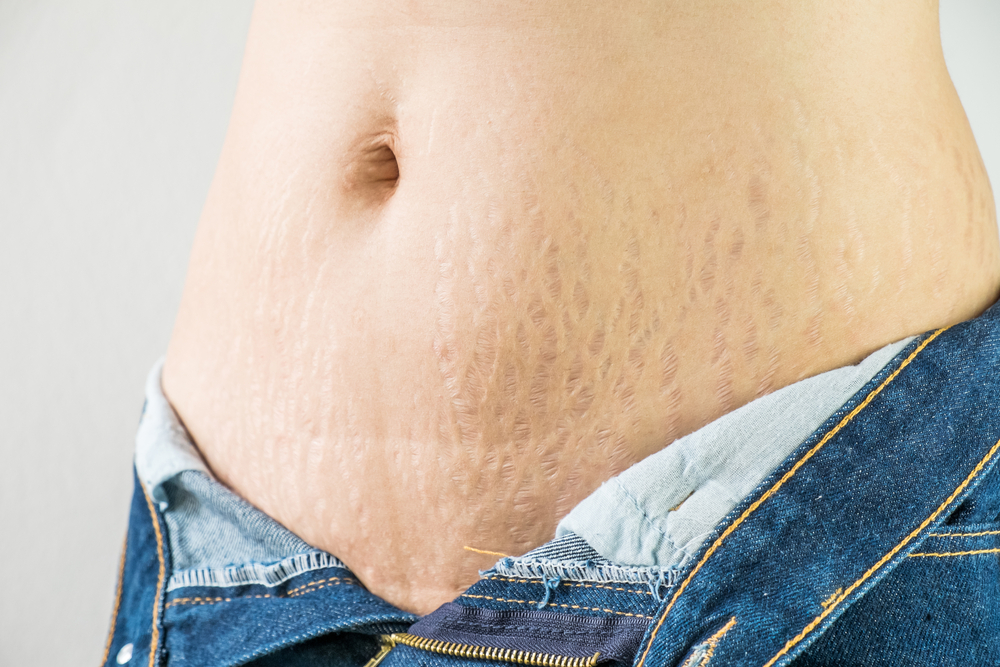- Stress can trigger skin conditions and make others worse.
- The best treatment for a stress rash is to manage your stress.
- Poor sleeping habits can amplify stress levels, making stress rashes worse.
Stress keeps you awake at night. It causes you to eat poorly, forgo exercise, and ignore basic routines like washing your face before you turn in for the night. It’s secondary effects on the skin alone include everything from dehydration to under-eye bags.
It is easy to say that stress is bad for you both where cosmetically and in terms of your overall health. This is a well documented fact, so you may not be surprised to hear that those purple circles above your cheekbones are the result of a stressful lifestyle.
What about that raised red welt on your arm? Stress rash, also known as stress hives, is as mysterious as it is frustrating to deal with. It’s origin and true nature are ambiguous, making it a challenge as far as treatment is concerned. It’s also easily confused or conflated with a variety of other skin conditions.
In this article, we unpack some of the limited and, at times, conflicting information out there about stress rash and how best to deal with it.
How does stress cause a rash?
The answer is at the same time both complicated and very simple. In general, people chalk it up to hormonal or chemical changes in the body that result from stress.
Some attribute it to dysbiosis, an imbalance in gut bacteria commonly associated with stress. Others suggest that the immunosuppressant qualities of cortisol, the stress hormone, pave the way for all manner of things to affect our bodies.
The bottom line is that there doesn’t appear to be a clear cut answer to this question. Stress is known to exacerbate or even trigger existing skin conditions, like psoriasis. However, hives can sometimes occur without any known connection to an existing condition. Whether the cause is chemical, hormonal, or simply a latent skin condition that has yet to be diagnosed, is unclear.
Reoccurring hives, also known as chronic urticaria, is when rash-like swollen bumps break out and persist with no known cause. As you’ll see below, stress rash shares a similar appearance. In fact, stress can even lead to outbreaks and worsening of this condition.
It is fair to say that many who believe that they are suffering from a stress rash are actually suffering from chronic urticaria. However, that doesn’t that mean the conditions are one in the same. Many sufferers of chronic urticaria do not report any stressful life events in relation to their condition.
What exactly is stress rash?
Stress rash is characterized by an outbreak of hives. These hives can appear anywhere on the body and often manifest in multiple locations. Hives are typically large, but can sometimes be very small. When they cluster in an area, they can grow together to form larger irregularly shaped patches known as wheals.
Hives are raised itchy patches of skin, sometimes accompanied by a tingling or burning sensation. They are often red. However, sometimes the hive itself can appear lighter while the surrounding skin turns red due to irritation. If you’ve ever been bitten by a mosquito or stung by a bee, you’ve likely experienced a hive.
A single hive won’t last long, typically disappearing within a day. However, new hives can manifest just as easily. More often than not all of your hives will resolve within six weeks. When they do, they are classified as acute, but if they persist past the six week mark, they are chronic. This brings us back around to chronic urticaria. Essentially, your stress rash will be diagnosed as such, with stress listed as the likely cause.
Of course, your stress rash might not be a stress rash in the strictest sense. It’s easy to confuse one skin condition with another. It’s also possible that your stress triggered a latent skin condition or exacerbated an existing one.
The following skin conditions may appear similar to a stress rash or be linked to stress as a contributing factor:
- Allergic reactions — Hives are most often seen as a symptom of allergic reaction. Certain food, plant, and medication allergies can trigger hives. Hives or a similar red, itchy rash, known as contact dermatitis, can also develop from allergies to certain lotions, soaps, or metals. If you are experiencing chronic hives, it is important to first rule out any allergens in your environment.
- Heat rash — When you overheat, you sweat a great deal. However, when your pores are blocked there’s no way for the perspiration generated by your body to escape. It instead collects under the skin and causes a heat rash, also known as a sweat rash or miliaria. There are different varieties of miliaria, some of which include itchy red bumps that can be confused with small hives.
- Psoriasis — Certain forms of psoriasis may be mistaken for hives. Inverse psoriasis in particular takes the form of large red welt-like patches. Onset or worsening of psoriasis symptoms is also linked to stress.
- Rosacea — This common skin condition causes tiny red pustules. At first glance, they may not appear hive-like, but if the skin is sufficiently irritated via itching, it will become inflamed. Stress could exacerbate these symptoms.
- Pityriasis rosea — This condition starts with a large, red, raised patch of skin. It is not a hive but can be mistaken for one. This “mother patch” is then surrounded by numerous smaller patches, or “daughter patches.”
- Eczema — The dry red itchy skin caused by eczema is sometimes confused with certain forms of psoriasis. Stress is a trigger for this condition, particularly in young children.
Skin is an organ, and the only one we wear on the outside of our bodies. Diagnosing and treating skin problems is a delicate matter. It’s important to consult with a dermatologist if you think you have any of these conditions.
When should I seek medical help?
Many skin conditions clear up on their own, but you should always be on the lookout for signs you might need medical guidance.
- It’s not going away. How long is too long? This appears to be up for debate. Some recommend contacting a dermatologist if your rash persists for more than a few days, while others say you can wait for a few weeks. How long you wait may depend on the severity of your symptoms.
- It’s getting worse. Let’s say you’ve been taking over-the-counter medications to alleviate the pain and itchiness and haven’t been bothering the area, however, the rash is growing, blistering, and becoming more painful. If so, it’s time to seek help.
- You get a fever. Fever is not associated with stress rash and could be a sign of a more serious condition, especially when paired with a rash.
- Your lips or face swell. This could be a sign of anaphylactic shock. It’s possible your hives are the result of an unknown allergy. Swelling in the lips and face can lead to swelling in the throat and difficulty breathing.
- Yellow or green discharge. You might notice this symptom with or without an accompanying fever. It is a sign of infection.
Rashes can be symptoms of underlying conditions, many of which are more serious than the rash itself. According to the American Academy of Dermatology, changes to the skin can hint at changes inside the body, and rashes might be the only outward symptom of a serious disease.
Stress rash treatment
Developing a skin rash with no clear cause beyond stress can be discouraging. However, even if you don’t know exactly what’s going on with your skin, you can still do something about it.
Over-the-counter options may not make your rash disappear, but they can help you manage the symptoms until it clears up.
Antihistamines, like Benadryl, will help reduce itching and swelling. You can also try Benadryl cream or an over-the-counter steroid cream, like Cortizone-10. Some dermatologists may even advise you to use these two in concert when dealing with an overwhelming itch. If neither of these work or you’re wary of medication, try a cool compress, cool bath, or a hypoallergenic lotion.
If your rash progresses, you may find yourself past the point of over-the-counter cures. Your dermatologist may send you home with a prescription strength corticosteroid to treat the itch and inflammation.
In particularly severe cases, you may also be prescribed antibiotics, specifically dapsone (Aczone). This antibiotic is commonly used in the treatment of skin conditions, like acne, or diseases known to cause skin conditions, like Duhring Disease.
If your rash turns out to be a symptom of a larger problem, like an allergic reaction or infection, your dermatologist will treat it accordingly.
Whatever else you do, it’s important to try and reduce your stress. If stress is the cause of the rash, then lessening it should help. Lowering your stress level will also make you healthier and better equipped to deal with anything else that may be causing your rash.
Stress management
Cutting down on stress is of course easier said than done. You can’t just decide to suddenly start worrying less about the things that matter to you. We’re not suggesting you need to overhaul your entire outlook, but there are a few simple things you can do to reduce the tension in your body, lower your blood pressure, and boost your mood.
- Sleep. Strive to get a solid seven to eight hours a night. Sleep will make you more mentally and physically equipped to deal with the stressors in your life. Poor sleep not only affects your mood, but also leads to high blood pressure and a weakened immune system. Sleep is also good for your skin. A good night’s sleep will keep under-eye bags at bay.
- Exercise. The “runner’s high” isn’t just for runners. Exercise releases endorphins, which lead to a post workout euphoria. Not to mention, staying fit gives you more energy and generally lifts spirits. Exercise strengthens your heart, lowering your blood pressure.
- Eat right. Eat plenty of healthy foods, and cut out fatty foods to lower both your blood pressure and your cholesterol. Drink plenty of water to keep your skin from getting too dry. You should also make a point of eating more fresh fruits and vegetables, especially leafy greens, to combat depression and anxiety.
- Unload some responsibilities. Get to the bottom of your stress or anxiety. If you’re taking on too much, it might be time to ask for help and drop some items from your to-do list.
- Meditate. Mindfulness meditation is said to reduce stress and anxiety. There are a variety of resources to guide people in meditation, including books, videos, and numerous apps.
If you need help working through the stress behind your rash, there’s no harm done by seeking medical help. It’s entirely possible, and in fact quite likely, that the right therapy or medication will help you better manage your stress. Talk to a psychologist or another psychiatric professional about your concerns.
» If you’re concerned about a rash, meet our Medical Review Team for an online consultation.









